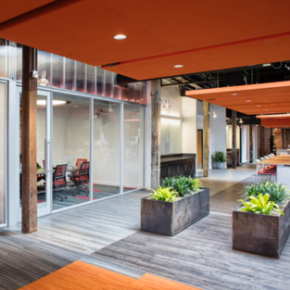The Value of Acoustics
The constant din of a loud workplace can be mentally exhausting, increase errors, and impact overall effectiveness. In a noisy world, it’s easy to overlook the power of quiet.
Last night my wife and I watched one of those medical television programs. (It doesn’t matter which one, they’re all the same). The main story featured a deaf patient who had undergone a procedure to receive cochlear implants after a lifetime of silence. In the end, the character had these implants removed since she didn’t like the person that she had become. With access to sound, the character felt that she was less sensitive, impatient, and had grown into a person she disliked.
I found this so interesting and began to wonder how my extroverted personality might be different without the constant buzz of life around me. As we rush from meetings to events, the sound never goes away. This may be why most people find the sound of the ocean waves crashing to shore soothing. Or why many prefer the calm brought on by the wind rustling through the trees during a brisk Autumn hike in Ohio. Nature sounds good. It is peaceful and is good for the soul.
Why is Acoustics Important in the Workplace?
Listen. What is that sound? If you’re reading this in a typical office environment, you may just not be able to hear a thing except for the constant din of distracting conversation. With the growing prevalence of open office plans, there is more background chatter, an increase in the distraction from proximate group meetings, and that one person who always talks too loudly on a cell phone. You know who I mean. This can reduce the ability for employees to be productive. Privacy is impacted, and these environments can even cause listening fatigue. Hearing many noise sources at once for an extended period can be mentally exhausting and the incidence of worker error can increase, and our overall effectiveness can be jeopardized.
Design Solutions

The designers at WSA Studio have adopted several strategies to mitigate the impact of noise in today’s open office and academic environments. These strategies have been monitored to measure their efficacy and we have found that many of the most effective solutions are not always immediately apparent.
The most effective methodology is to support mobility among employees. Our designers have worked hard to eliminate our client’s reliance on technology tools which tether them to a static workstation. Many projects benefit from a variety of rooms where associates can retreat for private conversations or media interaction in privacy.
It is very difficult to hold a Skype or FaceTime meeting in an open office environment on a private computer. These static experiences are distracting to those seated within close range and place pressure on participants and their colleagues.
In many of our recent projects, we have designed clusters of small, private enclaves as a destination for associates. These spaces can support small meetings, casual video conferencing, private phone calls, and one-on-one conversations. They establish a consolidated quiet zone and serve as a memorable destination to seek respite.
In larger, open office environments, we often specify products which help to reduce or mitigate noise levels. Even something as simple as the proper acoustical ceiling tile specification can make a huge difference. Did you realize that there are two basic types of ceiling tile material? Mineral fiber is absorptive since it is dense and bounces sound and collects the sound somewhat in the process. We typically specify mineral fiber in private office areas. Fiberglass allows sound to transfer through it where it may dissipate in a plenum, and we prefer this specification for large open areas.
Of course, there are troubling complications with each type and many additional considerations need to be factored with each project. In addition to ceiling systems, our team may suspend sound panels or apply them to vertical services, lighting products which help with sound absorption may be selected, and even the textiles which are used on furniture may be considered. Sometimes, we design spaces to encourage active learning or create an energized atmosphere. In these spaces, the design team may select crisp finishes and rely upon sound amplification to augment public address systems. The various design solutions to address acoustics are very complex, and the need for specialized acoustical consultation increases incrementally with the importance of sound intelligence in the space.
Results for People
 With this all said, our collective goal is to reduce occupant stress in the spaces we design. We know that matching the proper acoustical properties to each space can lead to improved mood and overall health and may even increase productivity. So, the next time you are trying to get your team to concentrate or energize your peers, make sure that you select the type of space to fit these activities with care.
With this all said, our collective goal is to reduce occupant stress in the spaces we design. We know that matching the proper acoustical properties to each space can lead to improved mood and overall health and may even increase productivity. So, the next time you are trying to get your team to concentrate or energize your peers, make sure that you select the type of space to fit these activities with care.